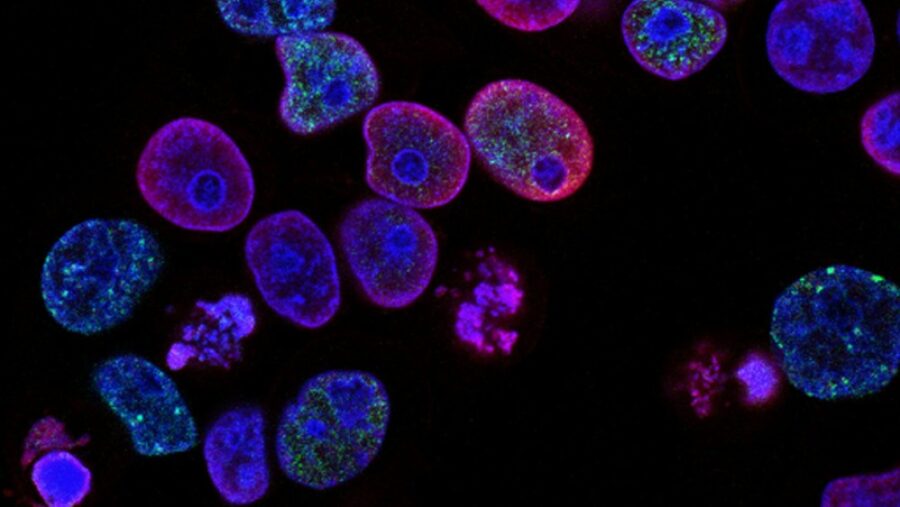Vibrating Molecules Eradicate 99% Of Cancer Cells, Scientists Call It Whole New Generation

Scientists recently achieved a groundbreaking milestone by developing an innovative method to eliminate 99 percent of cancer cells. How? Through employing vibrating molecules. This remarkable breakthrough represents a significant advancement in cancer treatment.
The approach involves utilizing amino cyanine molecules, stimulating them with near-infrared light. Aminocyanine molecules are often used as synthetic dyes in bioimaging.
The remarkable outcomes resulting from the vibrating molecules comprise a significant milestone in cancer research.
By inducing synchronous vibrations, this novel, exciting approach harnesses the power of aminocyanine molecules to disrupt cancer cell membranes. Rice University chemist James Tour likened the method to a “molecular jackhammer”—one surpassing the capabilities of previous Feringa-type motors.
More than a million times faster than their predecessors, these incredible vibrating molecules are akin to molecular machines and can be activated using near-infrared light (instead of visible light). The choice of near-infrared light is crucial; it can penetrate deeper into the body and enable treatment for cancers located in bones and internal organs.
All without the need for invasive surgery.
The laboratory tests were very promising indeed. For example, the molecular jackhammer technique achieved an impressive success rate of 99 percent in destroying cultured cancer cells. Moreover, experiments on mice suffering from melanoma tumors also demonstrated satisfying results. Due to the experiments, half of the mice became completely cancer-free.

The remarkable outcomes resulting from the vibrating molecules comprise a significant milestone in cancer research.
The unique structure and chemical properties of aminocyanine molecules explain some of the method’s success. When these molecules are stimulated, their electrons form plasmons, i.e. synchronized vibrating entities that facilitate coordinated movement inside the molecule. This coordinated movement then physically disrupts the membranes of cancer cells.
Rice University chemist James Tour likened the method to a “molecular jackhammer”
It’s all about the plasmon which, whether they sound like an alien race on Star Trek or not, play a crucial role in this process. Plasmons set up the connection between vibrating molecules and cancer cell membranes, driving the vibrations that ultimately eventuate the destruction of these cells.
This approach operates at a molecular level, constituting a cutting-edge method in cancer treatment, as explained by chemist Ciceron Ayala Orozco from Rice University.
Scientists from Rice University, Texas A&M University, and the University of Texas conducted this groundbreaking research collaboratively. Zeroing in on mechanical forces at the molecular scale, this work presents new possibilities for cancer treatment. Being a biomechanical technique, the vibrating molecules could pose significant challenges to cancer cells and their capacity to develop resistances.
Biomechanics, the relevant field, is the area of study concerning the structure, function, and motion of the mechanical aspects of biological systems. It pertains to any level of the organism, from whole organisms to organs, cells, and cell organelles. Fundamentally, it is the science of applying principles from physics, mainly mechanics, to understand biological systems.
Plasmons set up the connection between vibrating molecules and cancer cell membranes, driving the vibrations that ultimately eventuate the destruction of these cells.
The team of Texan scientists is also investigating alternative molecules that could be similarly employed. Their work offers promising prospects for vastly improving cancer treatment approaches.
Ultimately, this incredible advancement—utilizing vibrating molecules to eliminate cancer cells—signifies the dawn of a new era in cancer treatment. Introducing possibilities for noninvasive treatment alternatives, it presents an exceptionally efficient approach to eradicating cancer cells.
All of which can potentially transform our approach to cancer therapy.
Source: Nature Chemistry












